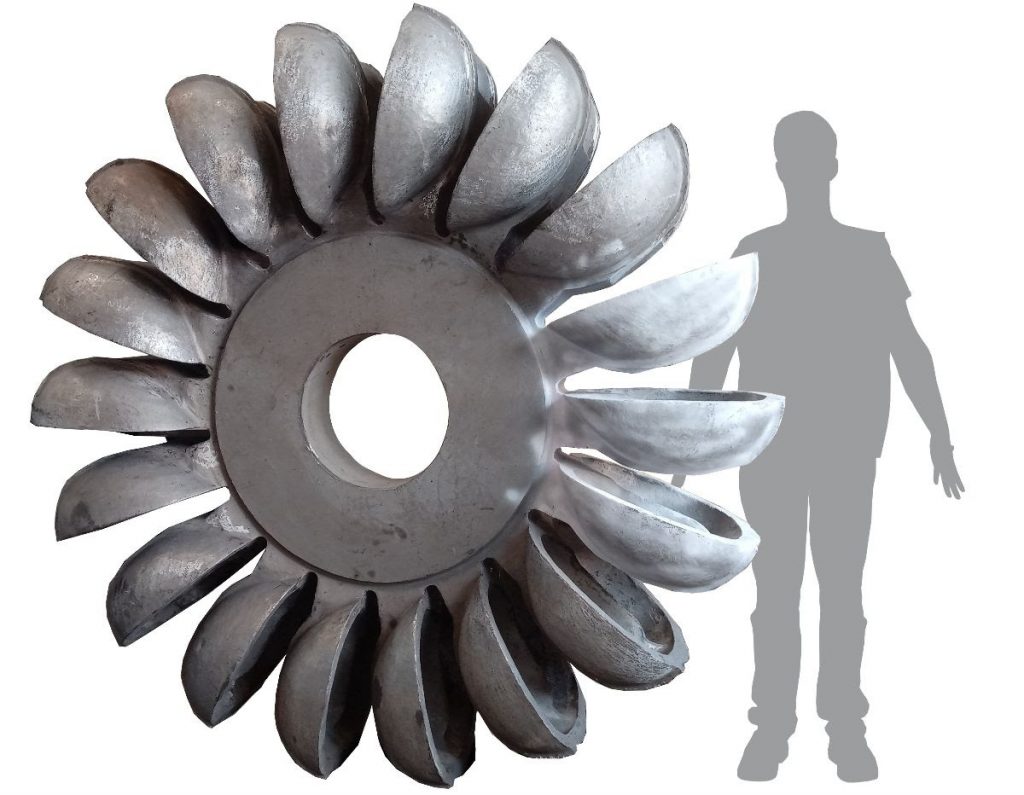We all need to reach out for help sometimes, and that can yield amazing results. This goes for even the most streamlined and impressive companies around the world too, recognizing when it is in their best interest to call in specialists. This was the case recently for Kirloskar Brothers Limited (KBL) as they leaned on voxeljet for their industrial 3D printing prowess—and in the process they were also able to reap almost all the rewards of 3D printing from enjoying better quality due to progressive technology to exponentially faster turnaround for their clients.
The collaboration between the India-based KBL and Germany’s voxeljet began a few years ago when KBL needed a 3.2-ton pelton runner (a turbine used frequently in hydroelectric plants) for an important client. The KBL team is usually responsible for meeting swift client deadlines, and often for making parts that require complex geometries—and of course, must be completed with the highest accuracy. Rather than taking a couple of months to manufacture a pelton runner through traditional casting methods, KBL sought out help from the voxeljet team, recognizing the need for more efficient, alternative manufacturing methods.
With the VX4000 3D printer, the pelton runner (with a build size of 4.000 x 2.000 x 1.000 mm) project was completed exactly how KBL was envisioning: on-demand, quickly, and affordably.
“In case of the Pelton Runner, the complete mold set including the cope, drag and 18 bucket cores, a total of 5.700 kg, in silica sand and furan binder, were 3D printed in a matter of just 72 hours,” the voxeljet team explained in a recent press release. “Except for KBL`s customary coating no other post processing was required. The mold was ready for assembly and casting immediately thereafter. Experience and expertise of the KBL-team in assembling this rather complicated mold was pivotal.”
KBL is now using 3D printing also to make ‘integral cores’ for impellers, bowls, and Francis runners (large turbines with curved blades). Previously, it would have been very difficult to make these with traditional core boxes.
“Thanks to 3D printing, we have reduced our delivery times drastically. Conventional production of critical molds and cores would usually take months. Now, we have molds ready for casting in just a couple of days,” said Mr. Birajdar, VP & Head Corporate Research Engineering & Development, at KBL. “We use 3D printed molds for all castings that require close dimensional accuracy, very short lead times or simply small batch sizes. At KBL we are also very happy to achieve repeatability and better surface finishes with 3D printed molds.”
Alexander Kudernatsch, Vice President Services at voxeljet AG notes that KBL was the first to start manufacturing sand molds with 3D printing in India. He also remarks on the technology further:
“3D printing significantly reduces delivery times and costs. At our service center in Germany, we operate, among others, three VX4000 printing systems. This enables us to offer our customers a total print volume of up to 480 tons per month. Given the enormous component sizes and the associated volume required by KBL, the VX4000 is ideally suited for the economical and efficient production of the demanded sand molds,” explains Alexander Kudernatsch, Vice President Services at voxeljet AG.
KBL is headquartered in India with eight production facilities there. They are also represented in the following countries:
- United States
- Great Britain
- United Arab Emirates
- Egypt
- South Africa
- Thailand
- The Netherlands
Voxeljet custom parts service centers are responsible for making sand molds and plastic models–on demand–and they are popular with small-batch and prototype manufacturers.
Source: 3dprint.com



